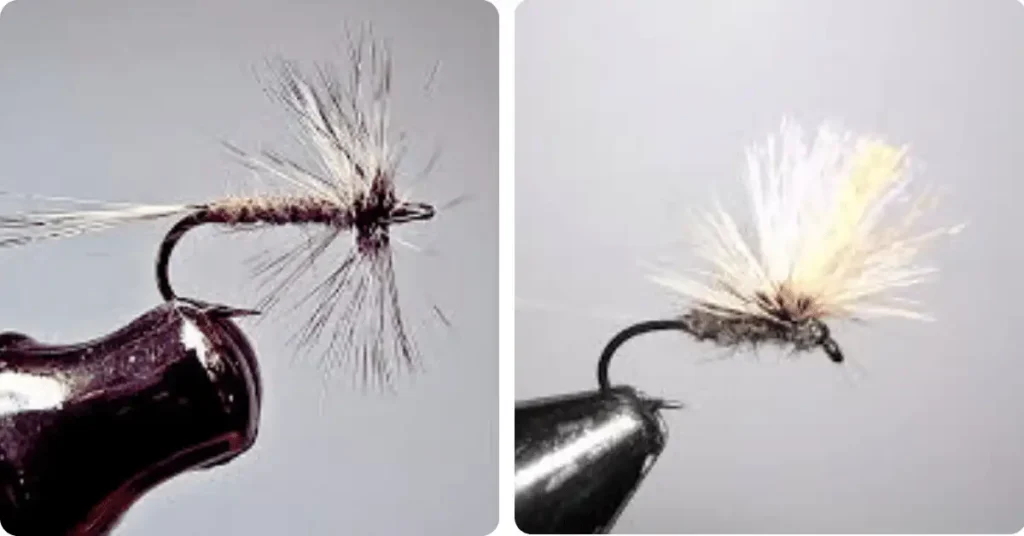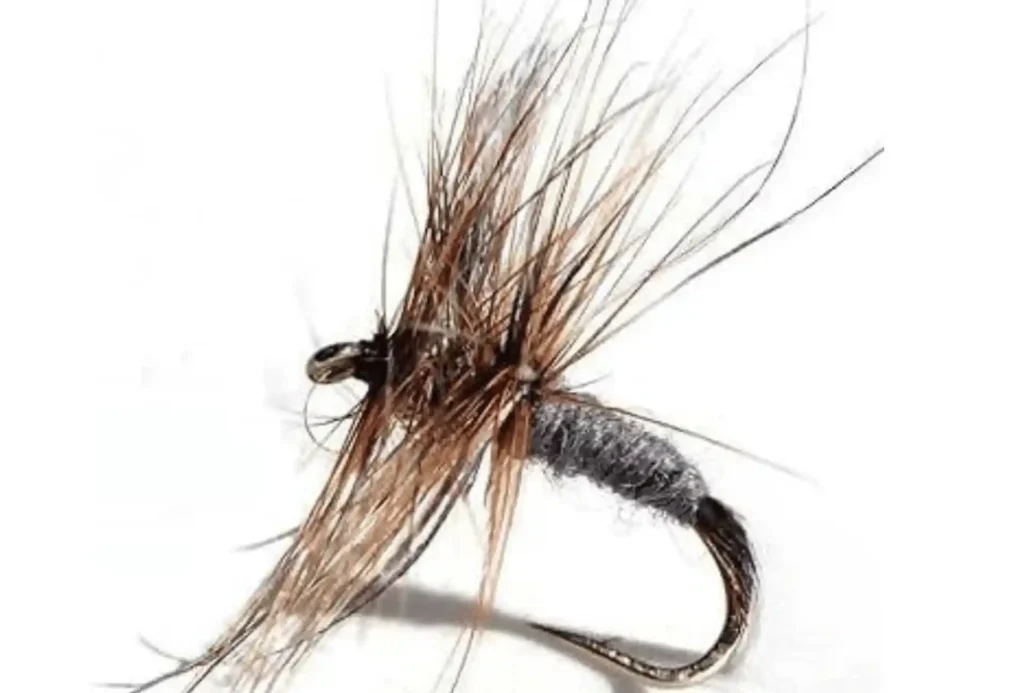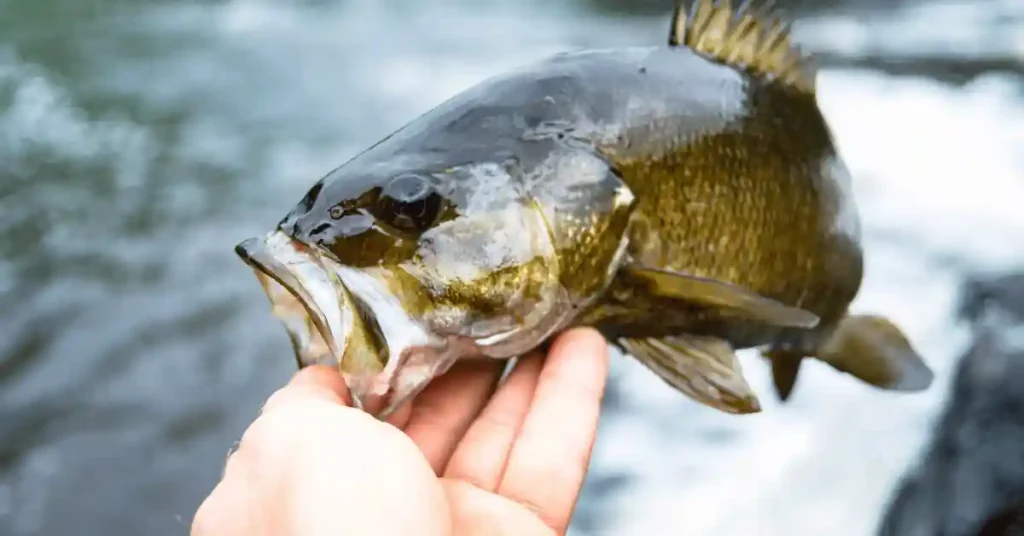How to Tie Grey Duster Fly: 3 Amazing Patterns

Whether you’re new to fishing or a pro, learning how to tie the Grey Duster fly can improve your fishing trips. This classic fly is simple but works like a charm, helping fishermen catch more fish everywhere.
In this Guide, we’ll walk you through everything you need to know about the Grey Duster fly, from getting the right materials to showing you three great ways to tie it.
Must Read: An In-depth Guide on Fly Fishing Tippet
What is Grey Duster Fly?
The Grey Duster fly is a popular fishing fly that’s been around for over 200 years! People love it because it’s simple but works well. It’s like a magnet for all sorts of fish.

This fly is designed to look like different stages of mayflies and other kinds of flies that fish like to eat. Its grey body and feathery surface make it look like the real thing floating in the water. Fish can’t resist it!
Learning how to tie this fly is a big deal for fishermen. It lets them catch all kinds of fish in different places and conditions.
Even though it’s a basic design, it is an art form. It’s fun to do and makes fishing even more exciting.
While some fishing flies go in and out of style, the Grey Duster fly has stuck around. It’s still a favorite for lots of experienced fishermen.
Its long-lasting popularity shows how awesome it is at catching fish. Knowing about the Grey Duster fly is essential whether you’re new to fishing or a pro. It adds a whole new level of fun to your fishing trips!
Essential Materials for Tying a Grey Duster Fly
You’ll need a few things to make your own Grey Duster fly. First, you’ll need a dry fly hook sized between 12 and 14. This size works well for the Grey Duster and helps attract lots of different fish.
The body of the fly is made from light grey thread. This color is important because it makes the fly look like different insects. So, make sure you have a good quality golden grey thread. It will make your fishing easy.

Next, you’ll need a grizzle cock hackle. This special feather has a unique pattern and structure, making the fly look real to fish. Wrapping it around the fly seems like legs and wings, making fish want to bite!
Add some fine lead wire if you want your fly to sink faster. Wrapping this around the hook at the start adds weight to the fly. That way, it can reach fish that hang out in deeper water.
Make sure to pick good quality materials. You want strong thread, fresh feathers, and a sturdy hook to make your Grey Duster fly look great and can handle fish nibbles.
Now that you have all your materials, you can make your own Grey Duster fly!
Recommended: How To Fish Emerger For Trout
How to Tie a Basic Grey Duster Fly
Making your own Grey Duster fly is easy, even if you’re new to it. Here’s how to do it:
- First, put your hook securely into your fly-tying vise.
- Take your light grey thread and wrap it along the hook’s shank to make the body of the fly.
- Now, get a grizzle cock hackle feather and attach it to the back of the fly.
- Wrap the hackle towards the front, making it look like legs and wings.
- Use the thread to tightly secure the feather in place, trim any extra bits, and tidy up the head.
- Ta-da! You’ve made a basic Grey Duster fly!
As you get better, you can try different versions of the fly. Experimenting is part of the fun!
Must Read: History of Fly Fishing
How to Tie 3 Productive Grey Duster Pattrens
The Grey Duster fly is a pattern used for decades to catch trout and other game fish. Its simple design makes it easy to tie, and its effectiveness makes it a staple in many anglers’ fly boxes.
Here, we’ll go over the steps to secure the traditional Grey Duster fly, as well as three variations that have proven to be productive.
Traditional Grey Duster Fly
Materials
- Hook: Size 12-16 dry fly hook
- Thread: Grey or black 8/0
- Tail: Grey or brown hackle fibers
- Body: Grey or olive dubbing
- Wing: Grey or white hackle fibers
- Hackle: Grizzly or brown
Steps by Step Guide
Step 1: Start by securing the hook in the vise and wrapping the thread from the eye to the bend of the hook. Tie in a small clump of hackle fibers for the tail.
Step 2: Wrap the thread to the eye and create a small dubbing ball with gray or olive dubbing. This will be the body of the fly.
Step 3: Tie in a small clump of hackle fibers for the wing just in front of the dubbing ball.
Step 4: Tie in a grizzly or brown hackle in front of the wing.
Step 5: Wrap the hackle around the fly’s body, catching all the hackle fibers as you go. Tie off the hackle and trim the excess.
Step 6: Pull the wing fibers forward and tie them down before the feather. Whip finish and trim the thread.
Note: Some of the steps in the variations may be same may be same.
Variation 1: Grey Duster with a Red Tag
Adding a red tag to the Grey Duster can make it more visible to fish in murky water or low light conditions.
Materials
- Hook: Size 12-16 dry fly hook
- Thread: Grey or black 8/0
- Tail: Grey or brown hackle fibers
- Wing: Grey or white hackle fibers
- Hackle: Grizzly or brown
- Tag: Red floss or thread
Steps by Step Guide
Step 1: Start by securing the hook in the vise and wrapping the thread from the eye to the bend of the hook. Tie in a small clump of hackle fibers for the tail.
Step 2: Wrap the thread to the eye and create a small dubbing ball with gray or olive dubbing. This will be the body of the fly.
Step 3: Tie in a small clump of hackle fibers for the wing just in front of the dubbing ball.
Step 4: Tie in a grizzly or brown hackle in front of the wing.
Step 5: Wrap the hackle around the fly’s body, catching all the hackle fibers as you go. Tie off the hackle and trim the excess.
Step 6: Tie in a small piece of red floss or thread just in front of the dubbing ball. Wrap the red material around the hook shank a few times to create a small tag. Tie off the red material and trim the excess.
Variation 2: Grey Duster with a Peacock Body
Using peacock herl for the body of the Grey Duster can create a more flashy fly that attracts fish in clear water.
Materials
- Hook: Size 12-16 dry fly hook
- Thread: Grey or black 8/0
- Tail: Grey or brown hackle fibers
- Body: Peacock herl
- Wing: Grey or white hackle fibers
- Hackle: Grizzly or brown
Steps by Step Guide
Steps 1-3: Follow the same steps as the traditional Grey Duster fly.
Step 4: Tie in a few strands of peacock herl just in front of the wing.
Step 5: Twist the peacock herl together to form a rope and wrap it around the hook shank to create the fly’s body. Tie off the peacock herl and trim the excess.
Step 6: Follow the same steps as the traditional Grey Duster fly to tie in the hackle and wing.
Variation 3: Grey Duster with a CDC Wing
Using CDC feathers for the wing of the Grey Duster can create a more realistic profile that mimics a real insect’s wings.
Materials
- Hook: Size 12-16 dry fly hook
- Thread: Grey or black 8/0
- Tail: Grey or brown hackle fibers
- Body: Grey or olive dubbing
- Wing: CDC feathers
- Hackle: Grizzly or brown
Steps by Step Guide
Step 1: Start by securing the hook in the vise and wrapping the thread from the eye to the bend of the hook. Tie in a small clump of hackle fibers for the tail.
Step 2: Wrap the thread to the eye and create a small dubbing ball with gray or olive dubbing. This will be the body of the fly.
Step 3: Tie in a small clump of hackle fibers for the wing just in front of the dubbing ball.
Step 4: Tie in a grizzly or brown hackle in front of the wing.
Step 5: Wrap the hackle around the fly’s body, catching all the hackle fibers as you go. Tie off the hackle and trim the excess.
Step 6: Tie in a few CDC feathers just in front of the plumage. Ensure the tips of the feathers are even and extend just past the hook bend.
Step 7: Fold the CDC feathers back over the fly’s body and tie them down just before the feather.
Step 8: Follow the same steps as the traditional Grey Duster fly to wrap the hackle and finish the fly.
If You Want To Watch A video Click Here.
Practice Makes Perfect
Like mastering any skill, becoming a pro at tying the Grey Duster fly takes time and patience. Start by learning the basics, and once you feel confident, try out the different versions we’ve discussed.
The main goal is to make a fly that looks and moves like the bugs in the water where you fish. You might need to get creative, as each fishing spot is different.
But remember to enjoy the process! Every time you tie a Grey Duster fly, you carry on a tradition that’s been around for a long time. As you get better, you’ll feel proud of making flies that catch fish and show off your skills.
And don’t worry if things go differently at first. Every mistake is a chance to learn and get better. With each Grey Duster fly you make, you’ll improve and understand more about how to make flies that work well.
Whether you’re new to fly fishing or want to get better, practicing tying Grey Duster flies can make your fishing adventures even more fun. So, grab your materials and give it a try! Before you know it, you’ll make Grey Duster fly like a pro.

Meet Ibrahim Khan, an avid angler and author in Fishing Teach. He shares his wealth of knowledge from his 16 years of experiences in fishing. His articles are a captivating blend of practical insights and thrilling tales that invite readers into the enchanting world of fishing.
Ibrahim’s guides are your go-to guide in the realm of fishing on this informational site. Hailing from a coastal paradise, Ibrahim’s passion for angling is the heartbeat of his life.
